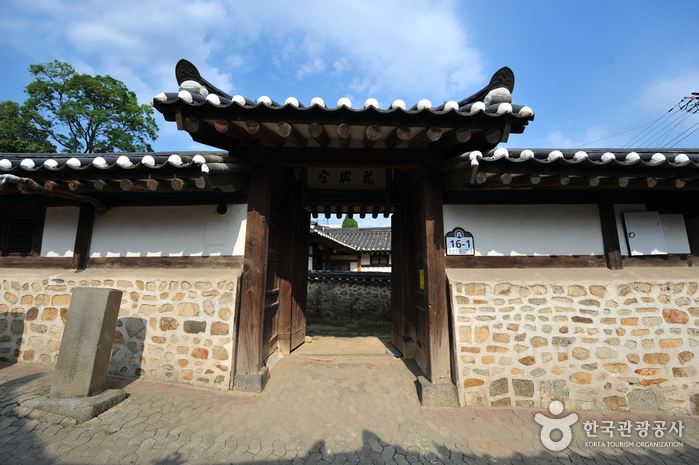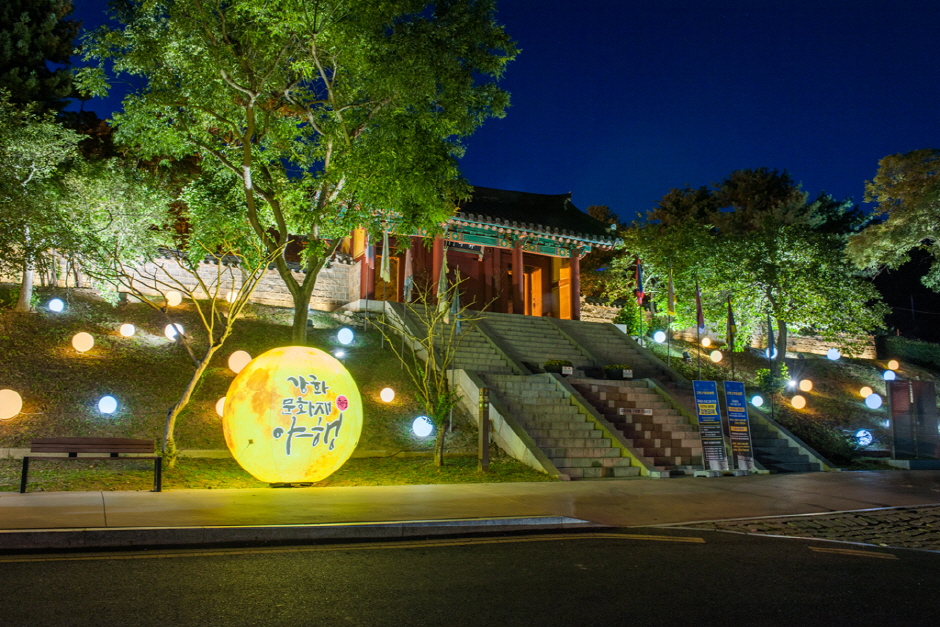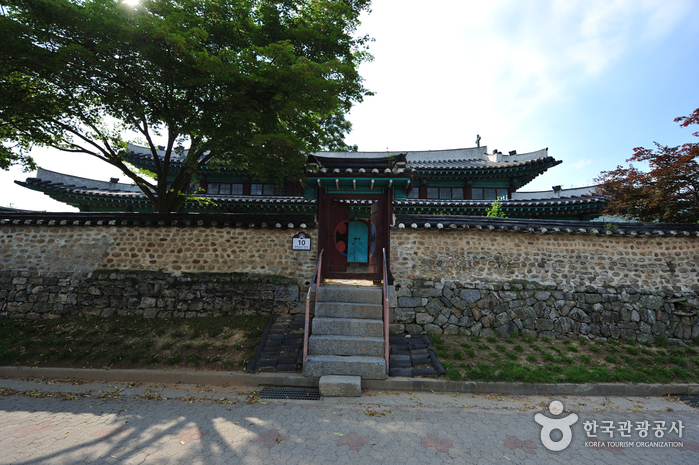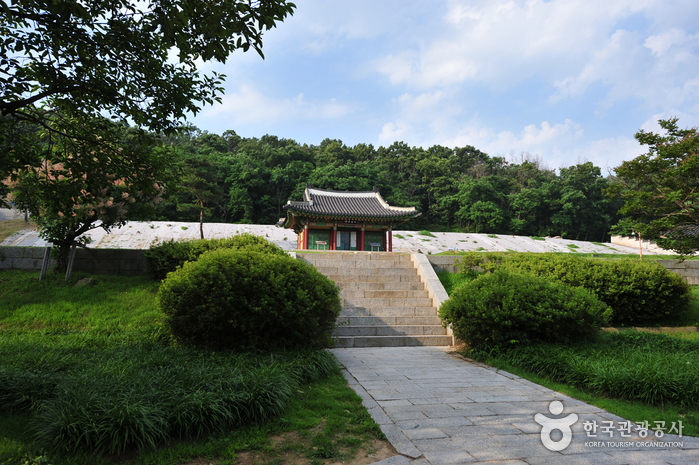Shin Arirang (신아리랑)
12.0 Km 27051 2024-02-26
4-3 Ganghwa-daero 409beon-gil, Ganghwa-eup, Ganghwa-gun, Incheon
Shin Arirang is a restaurant specializing in jeotguk galbi (salted shrimp and galbi soup), a local food from Ganghwa-gun. Jeotguk galbi is made by boiling pork galbi, pork bones, and vegetables with salted shrimp, offering a savory and rich flavor. Conveniently located near Ganghwa-gun Office, it is easily accessible and popular among locals.
Hwagae Garden (화개정원)
12.1 Km 0 2024-02-20
6-60 Gyodongdong-ro 471beon-gil, Gyodong-myeon, Ganghwa-gun, Incheon
Hwagae Garden is a park situated on the foothills of Hwagaesan Mountain in Gyodong-myeon. Exploring the trails, visitors can immerse themselves in the ever-changing beauty of Hwagaesan Mountain across the seasons. Opting for the monorail to reach the observatory rewards with a panoramic view extending to Ganghwado Island. The park is equipped with various amenities, including walking paths, a lawn, a children's playground, along with restaurants and cafés.
Yongheunggung Palace (용흥궁)
12.2 Km 17823 2022-07-27
16-1, Dongmunan-gil 21beon-gil, Ganghwa-gun, Incheon
+82-32-930-3515
Yongheunggung Palace is where King Cheoljong (r. 1849-1863) used to live before his ascension to throne. The chief of Ganghwa County, Jeong Gi-se, enlarged the original residence and named it Yongheunggung (meaning palace of the rising dragon) in the 4th year of King Cheoljong’s reign. Its architectural features include a paljak (traditional Korean half-hipped roof) and supporting columns rendered in Jusimpo style, the column brackets placed only on top of the columns. The palace was built in the tradition of dwelling houses such as the Yeongyeongdang and Nakseonjae houses in Changdeokgung Palace, so the palace buildings give off a simple and plain atmosphere. Within the precincts of the palace are a memorial stone and a monument house indicating that the palace used to be the old home of King Cheoljong.
Night of Ganghwa & Heritage Story (강화 문화재 야행)
12.2 Km 368 2021-09-15
Gwancheong-ri. Ganghwa-gun, Incheon
• 1330 Travel Hotline: +82-2-1330 (Korean, English, Japanese, Chinese) • For more info: +82-32-930-3569
Night of Ganghwa & Heritage Story takes place in the city of Ganghwa. There will be a media facade on cultural heritage sites for online viewers as well as a guided tour on bikes for offline visitors.
Ganghwa Seodo Central Church (강화 서도 중앙교회)
12.2 Km 26303 2020-06-16
256-1, Jumundo-gil, Ganghwa-gun, Incheon
+82-32-760-6474
By the late Joseon dynasty, Ganghwado Island had already been attacked many times by foreign invaders. During the Byeonginyangyo (the French invasion in 1866), the French fleet stayed in Ganghwado for about a month until they withdrew their forces after losing during the Jeongjoksanseong Battle. During the Sinmiyangyo (the United States expedition to Korea in 1981), the American fleet attacked Chojijin Fortress, Deokjinjin Fortress and Gwangseongbo Fortress. Hence,
Ganghwado played a big part in South Korea opening its doors to the West in the 19th century. Ganghwado also became the Western Christian missionaries' center of activity for their missionary works.
There are three remaining churches that were built in that time that were influenced or built by the Western Christian Missionaries: Ganghwa Anglican Church established in 1900, Ganghwa St. Andrew's Church established in 1906, and Ganghwa Seodo Central Church established in 1923.
Ganghwa Seodo Central Church started contruction in February 1923 and was completed as a Korean-architecture chapel in July 1923. The original name was Jumun Church and it was renamed as Seodo Central (Jungang) Church in 1978. The church belongs to The Korean Methodist Church.
Even though the building of the church doesn't reflect outstanding building techniques and aesthetic qualities, a Western church with a Korean-style wooden structure such as Ganghwa Seodo Central Church is still worth a visit.
Ganghwa Anglican Church (대한성공회 강화성당)
12.3 Km 33711 2020-04-18
10, Gwancheong-gil 27beon-gil, Ganghwa-gun, Incheon
+82-32-930-4571
Ganghwa Anglican Church was consecrated in 1900 by Charies Jone Corfe, the First Bishop of the Church as the St. Peter and St.Paul’s Church. The church has since undergone several restorations, but the design remains true to the original.
The two-story 4x10 rectangular building is characterized by traditional Korean construction style on the outside while the interior is a Western Basilica style symbolizing the beauty of harmony and Korean tradition. It was first designated as Gyeonggi-do Tangible Cultural Property No. 154 and then became Incheon Tangible Cultural property when Ganghwa was included in Incheon Metropolitan City. In January 2001 it was designated as Historic Site No.424 of Korea.
Goryeogung Palace Site (고려궁지)
12.3 Km 32458 2021-06-01
394, Ganghwa-daero, Ganghwa-gun, Incheon
+82-32-930-7078
Goryeogung Palace Site on Ganghwado Island is the site of the royal palace where the people of the Goryeo dynasty (918-1392) resisted the Mongolian invasion for 39 years. In the 19th year of his reign, King Gojong moved the capital to Ganghwa on account of its natural and strategic advantages. During the Byeongjahoran (Chinese invasion of Korea) in 1637, the palace was lost by force to the Qing dynasty of China. Later, Joseon Dynasty palace building and Ganghwa Yusubu (Ganghwa governor’s office) buildings existed in the Goryeo palace site but were destroyed by the French army during the Byeonginyangyo (French Campaign against Korea). Nowadays, the only structures that remain are the Dongheon main office (built in 1638) and Ibangcheong administration office (built in 1654). The palace and its subsidiary buildings were restored in 1977. It has historical lessons of the spirit of independence and overcoming national crisis.
Gyodongdo Daeryong Market (교동도 대룡시장)
12.3 Km 4508 2023-11-08
35 Gyodongnam-ro, Ganghwa-gun, Incheon
+82-32-934-1000
Daeryong Market is an alley market that reproduces the appearance of Yeonbaek Market to maintain a livelihood for residents who temporarily evacuated from Yeonbaek-gun in Hwanghae-do, to Gyodongdo Island during the Korean War. Gyodongdo Island has been the center of economic development for over 50 years. As most of the displaced elderly who created the market passed away and the population rapidly decreased, the market size also reduced considerably. However, with the opening of Gyodongdaegyo Bridge in July 2014, it has become a must-see course for tourists to take pictures of Daeryong Market, which looks like a movie set in the 1960s. Gyodong Giga Island, also referred to as Gyodong Swallow House, opened in late march of 2022 and provides tour information using intellectual techonology as well as bicycle and smartwatch rental services to tourists. In addition, there are various experience programs such as a VR video experience and "Making Gyodong Newspaper."
Ganghwa Gyodongdo Island (교동도(강화))
12.3 Km 51959 2021-06-16
35, Gyodongnam-ro, Ganghwa-gun, Incheon
+82-32-934-1000
Gyodongdo Island is located northwest of the larger Ganghwado Island, and was made more accessible with the opening of Gyodongdaegyo Bridge in July 2014. The name changed with different dynasties, being Gomokgeunhyeon during the Goguryeo Era and Gyodonghyeon under the reign of Silla King Gyeongdeok. The island served as an important stopover point for ambassadors and envoys heading to China. Popular attractions on the island now include Daeryong Market, an alleyway market decorated with colorful murals and statues, and Manghyangdae Memorial, a gathering place for refugees who fled from the nearby Hwanghaedo Island during the Korean War. Many of the houses on Gyodongdo Island have swallow nests under the eaves. The refugees consider the swallows as guests from their hometowns. As such, the island is home to the "peace & reunion" themed Gyodong Swallow House, Peace Trail, and Gyodong Studio. Gyodong Swallow House serves as an exhibition and performance space. The Peace Trail is a biking path around the island. At Gyodong Studio, visitors can put on old school uniforms and take black-and-white photographs.





 English
English
 한국어
한국어 日本語
日本語 中文(简体)
中文(简体) Deutsch
Deutsch Français
Français Español
Español Русский
Русский